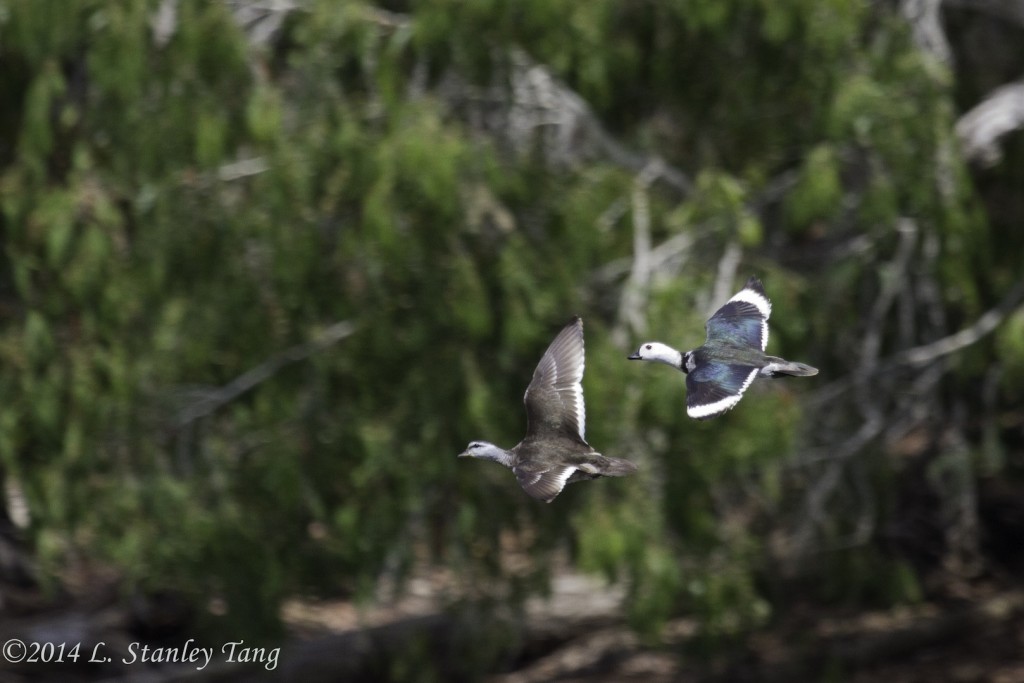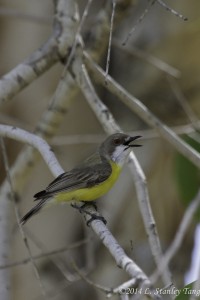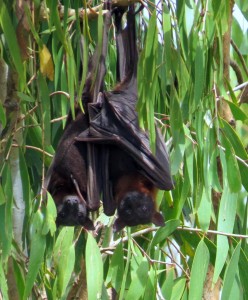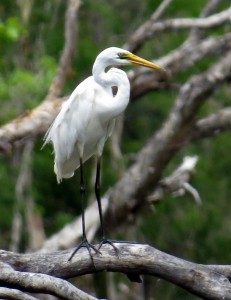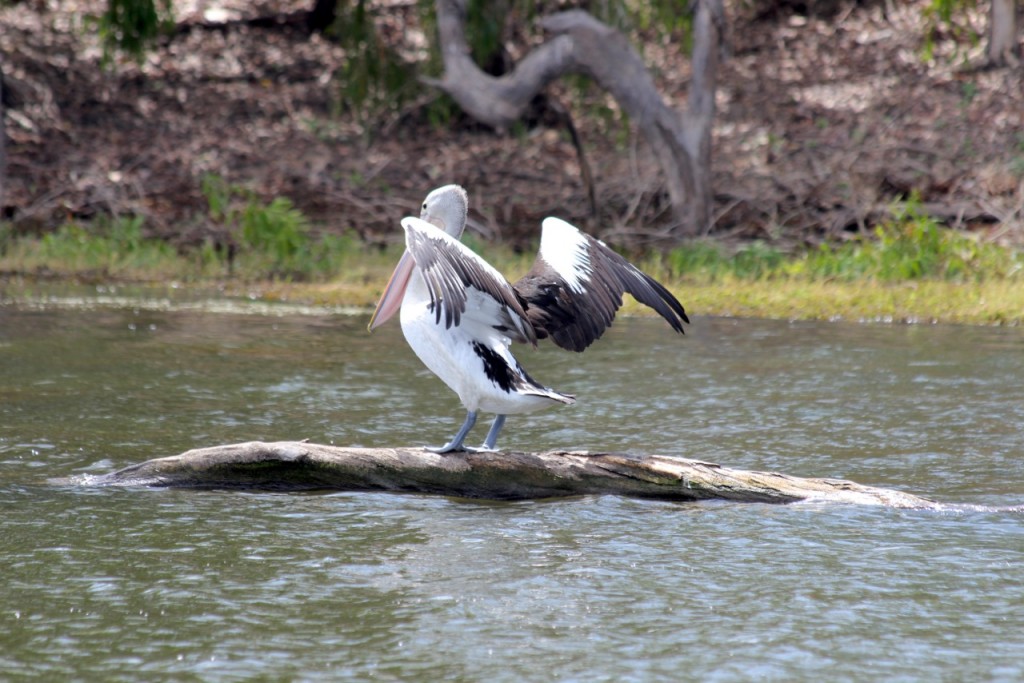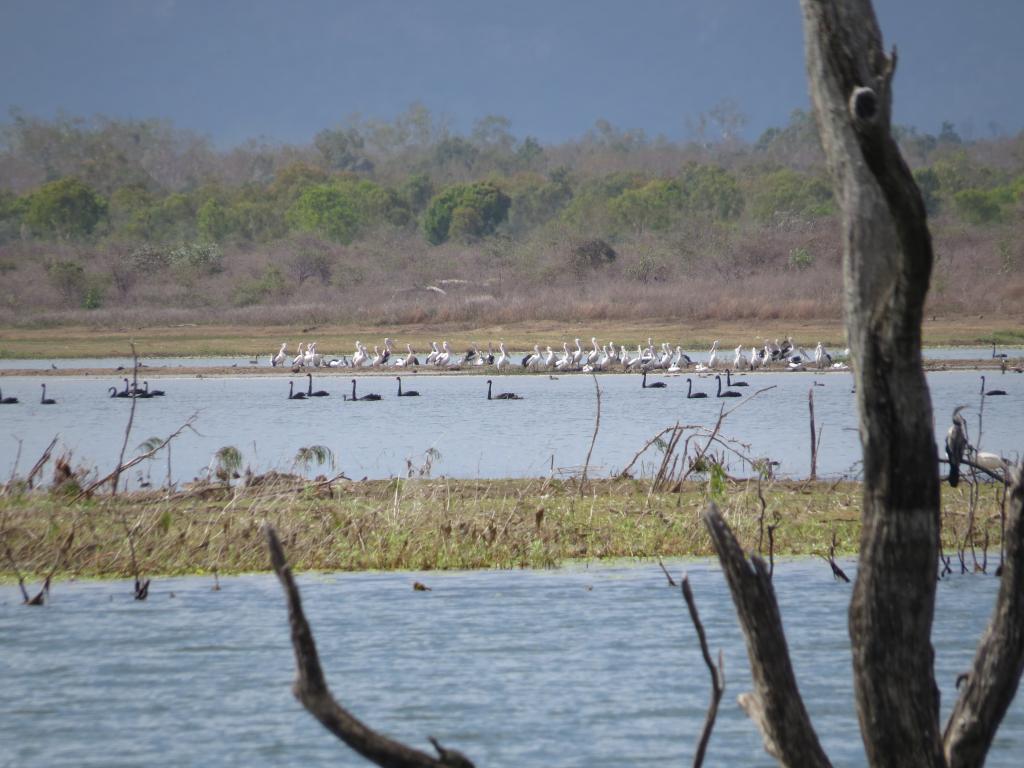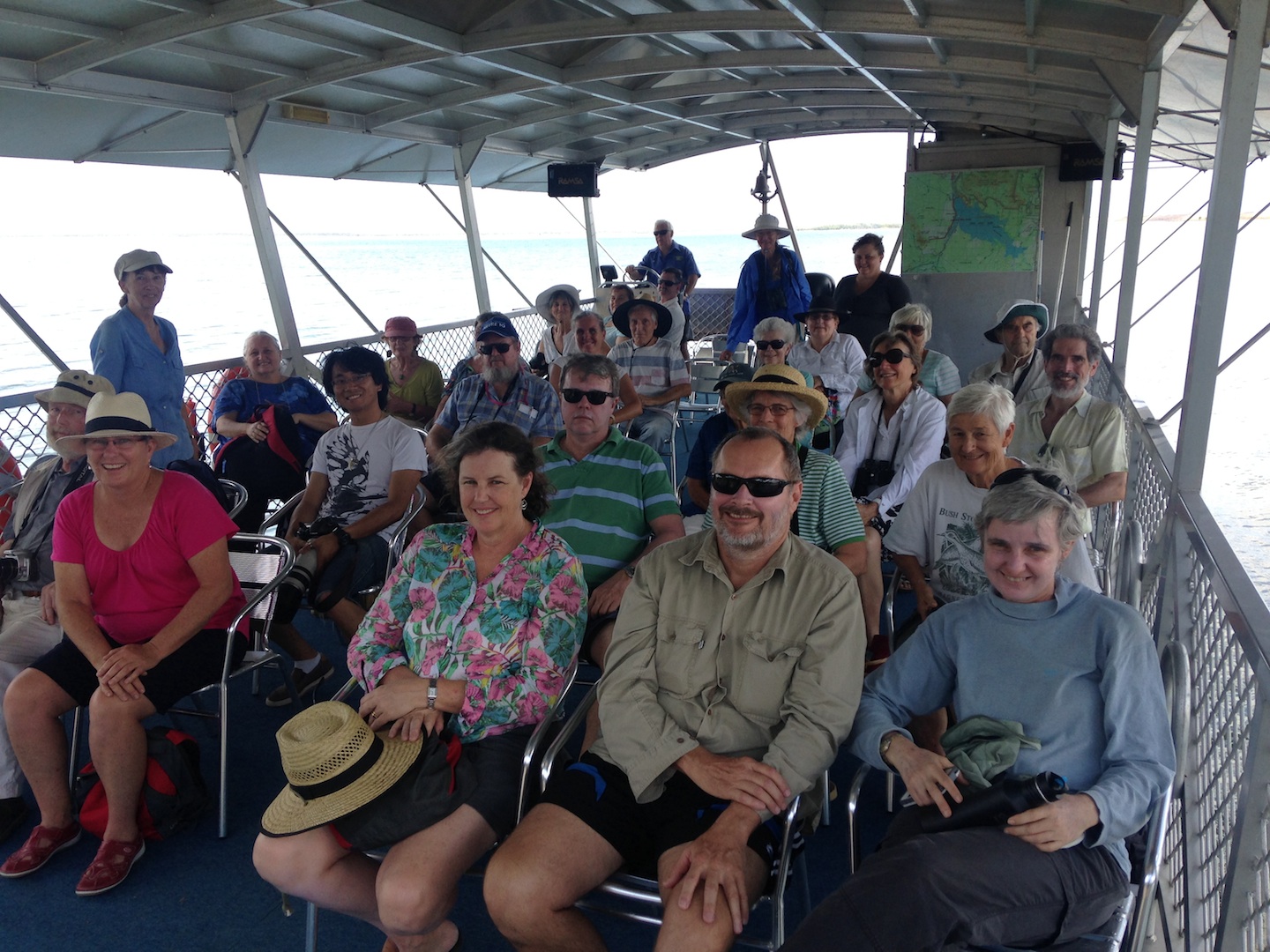
We’re loving this!! Members and friends show their enjoyment of the trip. Photo by Henry, our Sydney visitor.
When we did this trip in 2012 we had 15 people, this year we doubled it, next time around the Sullivans might need to get a bigger boat! The smiles above indicate our pleasure in a morning spent among old and new friends in such lovely surroundings. Despite the heat we were well shaded and cooled by occasional breezes and had views in all directions. Photographers and birders were kept very busy!
Either by design or chance Pop Sullivan took us on a different course from the one we had followed two years ago. This time we headed across the open water – passing a large flock of around 80 great-crested grebes on the way – towards the point on the far side where the Ross River empties itself into the dam. Along the way Pop Sullivan gave us some of the rich history of the area long before the dam came into existence. Proceeding up the river we were concerned to note the presence of water-skiers who now have access to this lower reach as well as to the open water, where they have been allowed for at least a decade. More on this below.
Before returning to the dam proper, we ventured up two smaller streams, Round Mountain Creek and Milky Creek, both particularly attractive with their tree-lined banks. Whistling kites cavorted over our heads, a sea-eagle soared, an azure kingfisher perched on a dead tree, cotton pygmy geese flashed past in flight and wallabies cautiously surveyed us through the trees. Oh, for a kayak to allow us to penetrate further upstream than our vessel could take us!
At two points Pop nudged the boat into the bank to allow us to go ashore – a chance to get views towards flocks of hundreds of pelicans and black swans and, closer to hand, dotterel, jacanas, sandpipers and other waders. At our second landing point, while some lingered to read the interpretive signs and photographs erected by the Sullivans, those who climbed to the top of a small rise were rewarded by the sight of a distant bustard. The immense value of this water resource was accentuated by the aridity of the surrounding bush, crying out for rain.
As we returned to the boat a pretty, warbling bird call close to the bank attracted our attention. Our two expert young birders identified it as coming from a white-thoated gerygone (pronounced like ‘Antigone’) and photographed it. These birds are silent for much of the year but the males start calling during the breeding season – go here to listen to a recording. It is a remarkably loud, clear call for such a small bird.
At our earlier stop the chatter of flying-foxes had alerted us to a lively colony roosting in a stand of Melaleucas crowded on the bank, some of the bats so low in the trees that they were almost in the water. What a relief to see a colony in such suitable habitat far away from human residences and the inevitable complaints! Discussion ensued as to which species was present, as they appeared brown in the air but very black in the trees – the photographs later confirmed them to be Little Reds, some of them displaying their very red chest fur.
The Branch will be expressing its concern to Council regarding the risk that water-skiing poses in relation to disturbance of both birds and flying-foxes, bank erosion from the wash of power-boats and the intrusion into the experience of those who visit the dam for bird-watching and quiet nature-based recreation.
I am most grateful to Henry, visiting from Sydney, for compiling the extensive bird list and to Stanley, Julia and Malcolm for supplying some lovely images (do click on each one to enlarge). Thanks also to Pop and Heather for sharing their enthusiasm and knowledge – and for the yummy morning tea! I am sure this trip is one we will want to repeat – perhaps at a different time of year?
| Australian pelican | Sharp-tailed sandpiper | Brush cuckoo |
| Australasian darter | Red-necked stint | Eastern koel |
| Little pied cormorant | Comb-crested jacana | Pheasant coucal |
| Little black cormorant | Masked lapwing | Azure kingfisher |
| Pied cormorant | Black-fronted dotterel | Laughing kookaburra |
| Great-crested grebe | White-headed stilt | Dollarbird |
| Black swan | Silver gull | White-throated gerygone |
| Pacific black duck | Whiskered tern | Helmeted friarbird |
| Hardhead | Caspian tern | Little friarbird |
| Australian wood duck | Pacific baza | Yellow honeyeater |
| Grey teal | Black kite | Black-chinned honeyeater |
| Cotton pygmy-goose | Whistling kite | Willie wagtail |
| Green pygmy-goose | White-bellied sea-eagle | Little shrike-thrush |
| White-faced heron | Wedge-tailed sea-eagle | Magpie lark |
| Cattle egret | Peregrine falcon | Olive-backed oriole |
| Eastern great egret | Topknot pigeon | Australasian figbird |
| Intermediate egret | Peaceful dove | Black-faced cuckoo-shrike |
| Little egret | Red-tailed black cockatoo | White-breasted woodswallow |
| Glossy ibis | Sulphur-crested cockatoo | Torresian crow |
| Australian white ibis | Rainbow lorikeet | Welcome swallow |
| Black-necked stork | Scaly-breasted lorikeet | Tree martin |
| Australian bustard | Red-winged parrot | Olive-backed sunbird |





